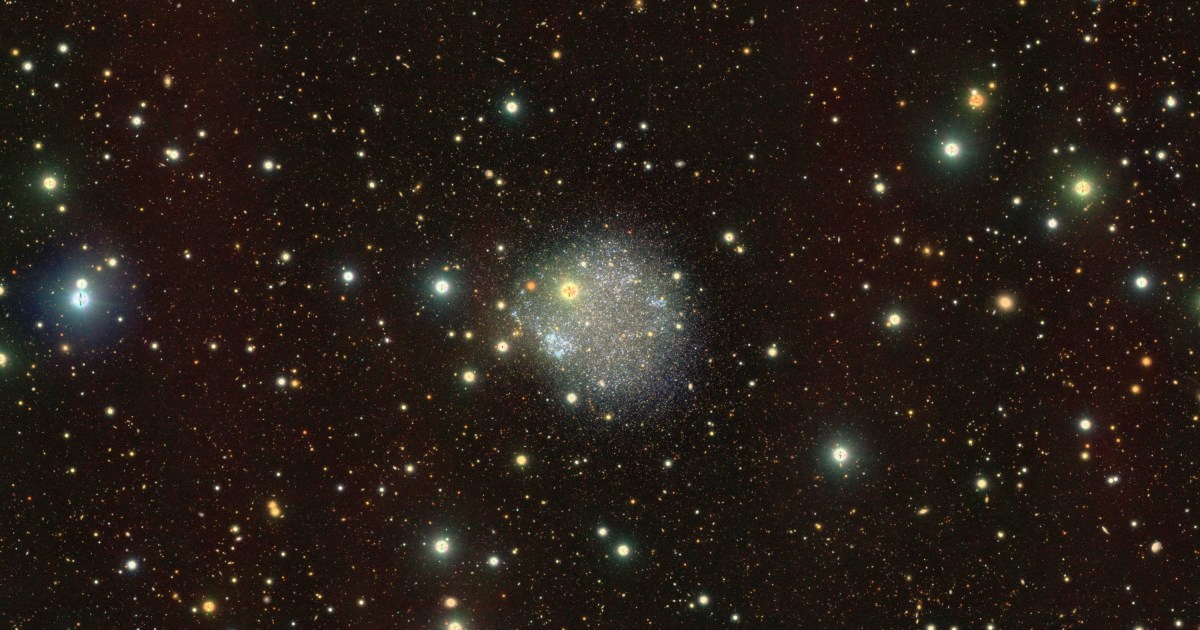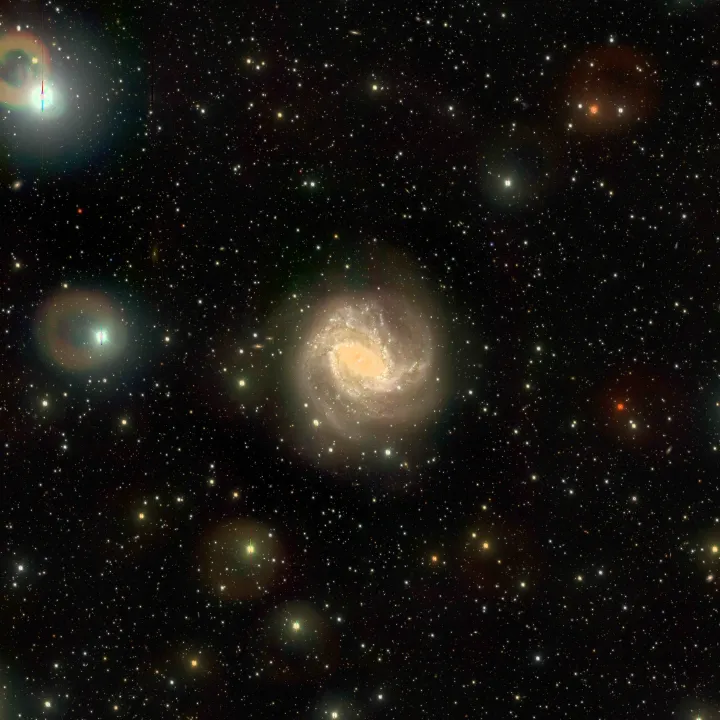
A gorgeous new set of images shows the striking sight of nearby galaxies, captured by a telescope called the VLT Survey Telescope (VST), located at the European Southern Observatory (ESO)’s Paranal Observatory in Chile. Some of these galaxies are well-known, like the famous Sextans A, which is a small dwarf galaxy with an unusual square shape that is located just 4 million light years away.
Sextans A, shown above, is just a fraction of the size of our Milky Way galaxy at only 5,000 light years across and has been shaped by epic supernova events as stars come to the end of their lives and explode, pushing the material of the galaxy into its odd configuration.
It was studied along with other galaxies like the nearby NGC 3109, shown above, to learn how galaxies form, as part of a project called The VLT Survey Telescope Survey of Mass Assembly and Structural Hierarchy (VST-SMASH). In total, the project covered 27 galaxies.
“We strive to understand how galaxies are formed as a function of their mass and morphology. This means asking ourselves how stars are formed in situ, within galaxies, but also how they are accreted (ex situ) during merger processes with other galaxies,” explained lead researcher Crescenzo Tortora of the Italian National Institute for Astrophysics. “In order to do so, we need to trace the colors of these galaxies up to their outskirts to investigate the presence of faint structures belonging to these galaxies and of faint galaxies orbiting around them. This is useful to uncover leftovers from galactic interactions, constraining the hierarchical process of cosmic structure formation.”

Other galaxies studied in the project include the spiral galaxy IC 5332, located 30 million light years away, the irregular galaxy NGC 5253, located 11 million light years away, and NGC 5236, also known as the Southern Pinwheel, located 15 million light years away. The Southern Pinwheel is a particularly striking barred spiral galaxy that is one of the closest and brightest in the sky — so close that you don’t even need a telescope to see it, as it can be observed using binoculars.

“This is the first time that all these galaxies are observed in such a deep and detailed fashion and with homogeneous data,” Tortora said. “In coming years, only Euclid will reach comparable depth in the optical domain, but without the same wide spectral range at the VST optical wavelengths. The Vera Rubin Observatory, instead, while observing in similar spectral regions to ours, will reach similar depths only after many years of observations. This makes the VST an instrument that can still make a difference, making us hope for interesting results as part of our survey.”

Further information is published in the ESO magazine The Messenger .






